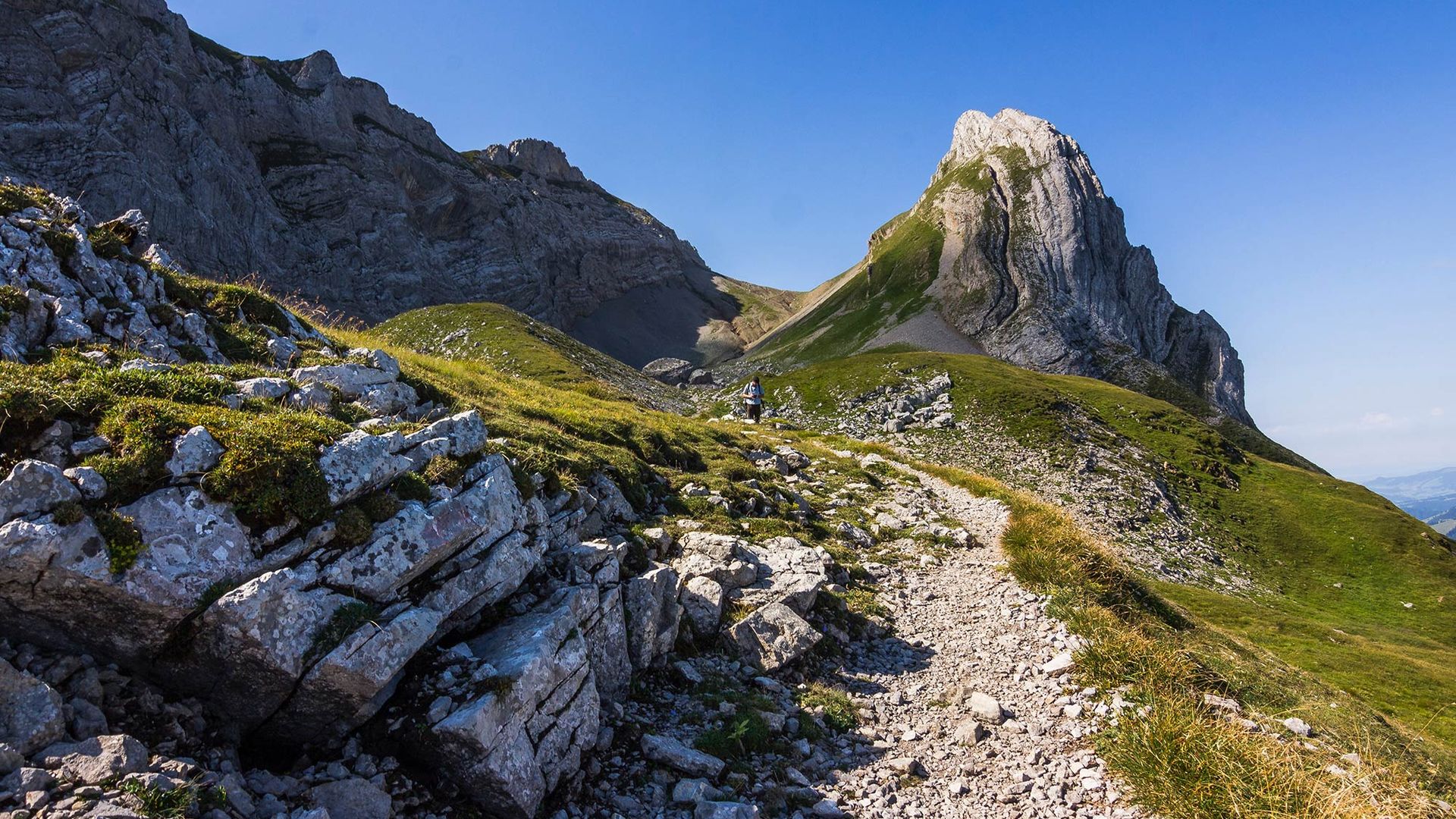Hikes in the Alpstein
Deep valleys, idyllic mountain lakes and fantastic views
The Alpstein peaks, such as the Silberplatten, which shine brightly in the sun and can be seen from afar in the Mittelland, were formed millions of years ago from Cretaceous marine deposits. Deep valleys, idyllic mountain lakes and fantastic views attract sports enthusiasts and nature lovers alike. The Alpstein is part of the Appenzell Alps and belongs to the cantons of Appenzell Innerrhoden, Appenzell Ausserrhoden and St. Gallen. Despite the rather low altitude compared to other Alpine peaks – the highest mountain is the Säntis at 2502 metres – the Alpstein appears very mighty due to its northerly ‘outpost location’ with only a short distance to Lake Constance. Its attraction is correspondingly strong. Access to the mountain world was made easier for visitors from 1850 onwards with the construction of hiking trails and mountain restaurants. An ambitious Säntis railway project across the Meglisalp to the Säntis failed. The tracks of the former Säntis railway end in Wasserauen, but left room for the construction of several cable cars. Today, the Alpstein has the densest network of hiking trails in Switzerland, with six cable cars and 25 mountain restaurants. Word has spread about the beauty of the Alpstein. The Aescher and the Wildkirchli have even achieved world fame.
Alongside well-known routes, the Alpstein still has plenty of secret spots and lesser-travelled paths. Its impressive natural beauty can be discovered on countless hiking trails. Nature lovers are spoilt for choice – from easy strolls to challenging mountain hikes. Thanks to the extensive public transport network, many mountain hikes can be flexibly arranged. In the valley, there are also various themed hiking trails to choose from. The Alpstein offers a lot to many: the Altmann or the peaks of the Kreuzberge are a traditional climbing area. If you don't just want to watch the mountain choughs on the summits, you can fulfil your dream of flying yourself. Ebenalp, Hohe Kasten or Kronberg offer ideal conditions for paragliding.
The region is also innovative in other ways. For example, the network of mountain inns in the Alpstein region, which can be explored on foot, has been designed by artists. The whisky trail, which takes in a range of whiskies aged in different casks at the mountain inns of the Alpstein, has almost become legendary.
Säntis – the fourth highest
On Schwägalp, the Säntis impresses with its steep flanks, despite its relatively low altitude of 2502 metres. Its height, including the height of its ridgeline, even makes the Säntis the fourth highest mountain in Switzerland.
The hike to the summit of the Säntis is worth it just for the view. On a clear day, you can see six different countries and the horizon seems endless. The fantastic natural surroundings and attractive options, such as special trips to see the sunrise, make the Säntis a destination that you will want to visit again and again. The Säntis, like its surroundings, is an unforgettable natural experience and also a hospitable place. At the summit, panoramic and terrace restaurants invite you to linger.
How to get there: take the Voralpen-Express to Herisau and the Appenzeller Railways to Urnäsch.
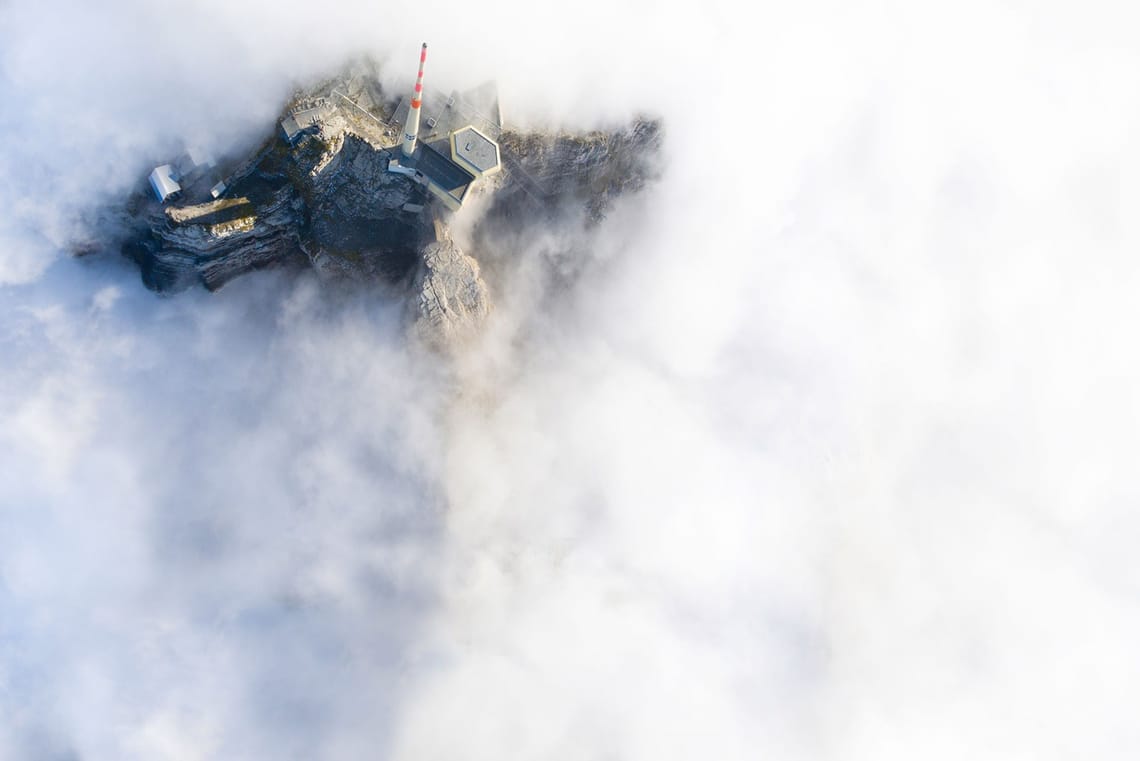
Seealpsee
The Voralpen-Express will take you to Herisau, where you can board the Appenzeller trains to Wasserauen. From Wasserauen, you can reach the Seealpsee in about 45 minutes on foot through the Hüttentobel and along the Schwendibach. The Forelle mountain inn offers the perfect refreshment and a unique view of the colossal mountain peaks of the Alpstein.
How to get there: take the Voralpen-Express to Herisau and the Appenzeller Railways to Wasserauen.
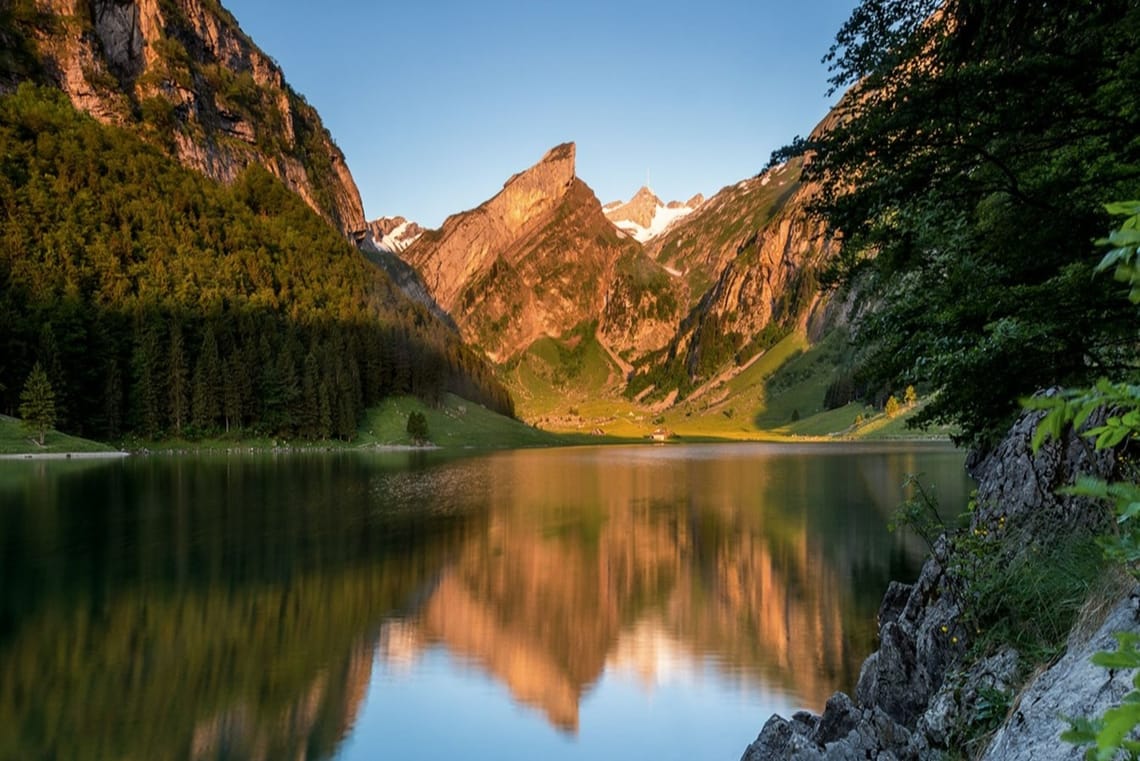
Schäfler
The cable car takes you to Steinegg, where you can rent your e-bike at Danis Velolade and ride via Weissbad to Lehmen or Vordere Neuenalp in 30 minutes. On foot, you can take a direct route past the Fielderköpfe to the Schäfler. Enjoy the view down to the Seealpsee and the view into the Montafon while savouring a whisky sausage and meringues (one after the other). Via Chlus and Gartenalp you will arrive back at your bike.
How to get there: take the Voralpen-Express to Herisau, then the Appenzeller Bahnen to Steinegg
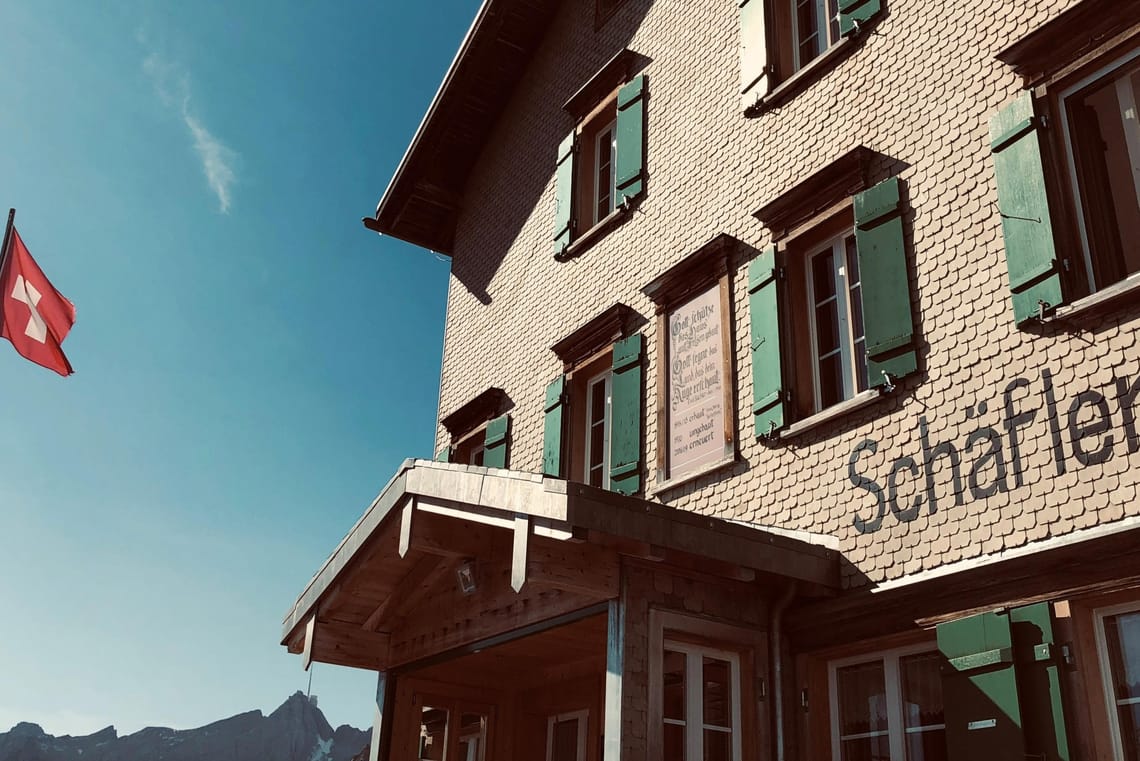
Along the young Goldach to the Gäbris
The railway will take you to Trogen, where you start your hike and follow the Goldach to the three-cantonal landmark. Continue in a westerly direction, high above the Rhine Valley on the Suruggen to the old mountain inn Unterer Gäbris, where you should definitely order a Schlorzifladen (for those with a sweet tooth) or Bloderchääs (for those with a hearty appetite). The Gäbris is just a few metres further up, from where it takes 40 minutes to walk to Gais. In the opposite direction, the route delights all mountain bikers with some flowing single trails.
How to get there: take the Voralpen-Express to St. Gallen and the Appenzeller Bahnen to Trogen.
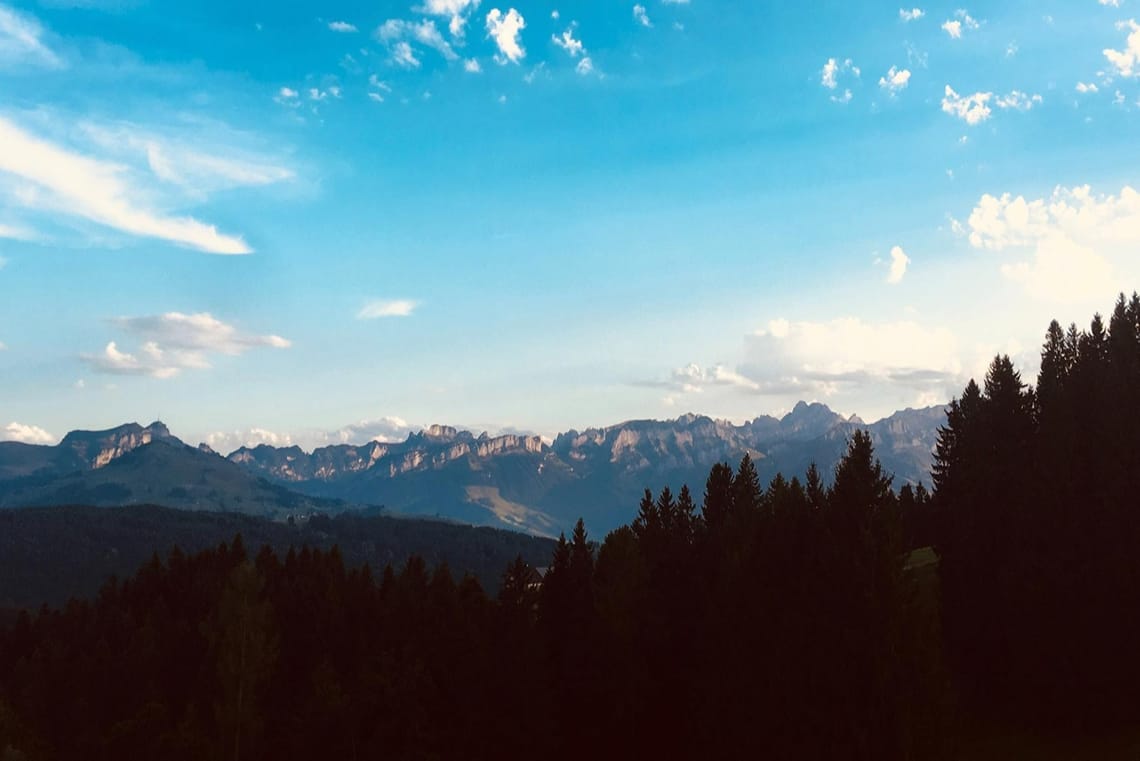
Black- and grey-crowned crane
Take the S2 to Nesslau-Neu St. Johann. Then take the bus to Schiltmoos, where you start your hike. Through mosses and meadows you reach Unterhoffeld and then go up to Stosssattel. Continue over rocky paths to the Tierwis mountain restaurant. Reserve half board and enjoy the sunset. The next day, visit the Säntis and breathe in the clear mountain air. The cable car will take you back down to Schwägalp.
Getting there: take the S2 to Nesslau-Neu St. Johann
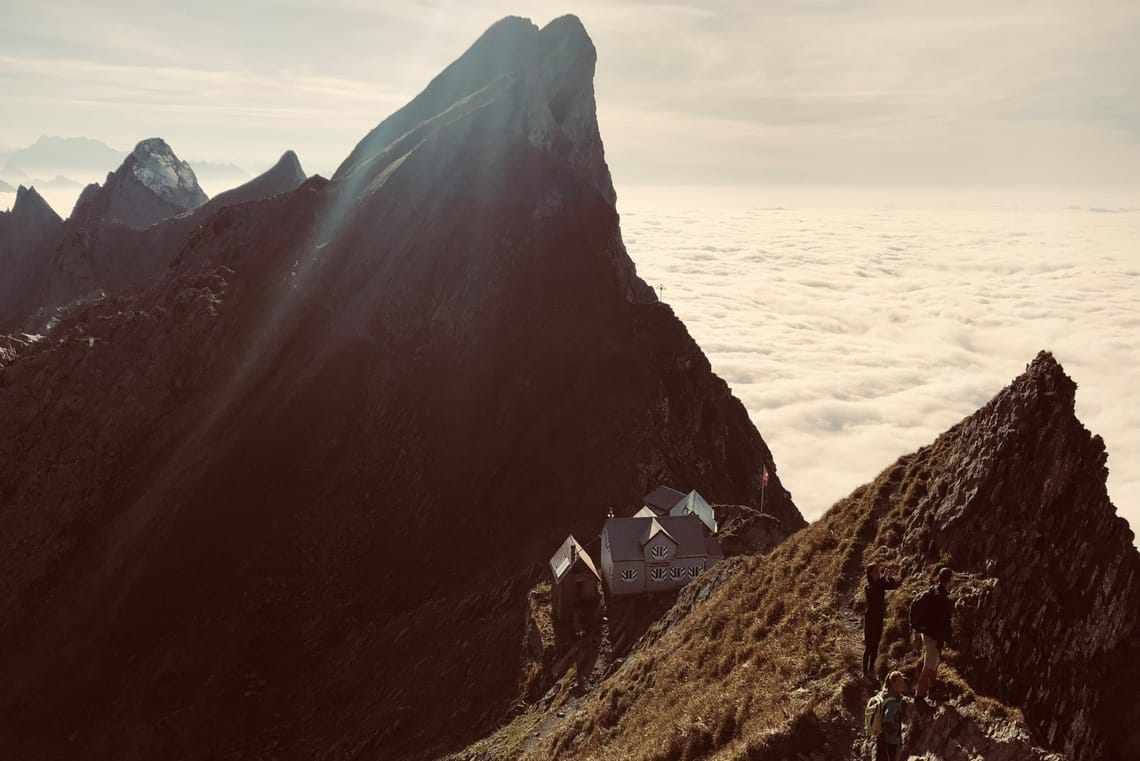
Pre-Alpine: Schwägalp and Risipass
Stage 4 of the Alpine Panorama Trail begins at Schwägalp. It leads over the Risipass to Toggenburg. The region around Schwägalp is listed in the Inventory of Landscapes of National Importance. The area is part of a cultural landscape that looks back on a tradition of over 1000 years. Traditional values in craftsmanship, forestry, agriculture and customs are still practised here today. Schwägalp also sees itself as a nature discovery park. Many attractive hiking trails allow visitors to experience nature. Five themed trails also provide interesting information about people and the environment, Alpine farming, moorland and forests. The Alpine Panorama Trail leads from Schwägalp over pastures, through short sections of forest and past numerous streams for a little over an hour down into the valley to Lutertannen, where a steady but gentle ascent to the Risipass begins. The stage destination of Stein (SG) is reached by descending through lush meadows and Alpine pastures.
Old Säntis
The traditional mountain restaurant is just two minutes from the cable car station – a popular destination for hikers, holidaymakers and those seeking relaxation. In May 1846, 35-year-old Jakob Dörig, known as Schribes Jock, began building a simple refuge hut on the summit of the Säntis, thereby starting the tradition of mountain hospitality on the Säntis. Today, the fifth generation of the family runs the restaurant at the Old Säntis. The unique location offers a panoramic view of the surrounding mountain world. Here you can leave the daily grind behind you, playing cards in the warm sun or in the cosy restaurant, chatting with fellow hikers or other guests, or simply marvelling at the Alpine splendour and trying to identify one or other of the surrounding mountain peaks. Day guests can indulge themselves on the restaurant's sun terrace, while overnight guests enjoy unforgettable sunrises.
Hotel Säntis
The three-star superior Hotel Säntis is situated at the foot of the Säntis. In the midst of breathtaking natural scenery, it invites you to linger and marvel. Guests can reach the Schwägalp, the pass between Appenzellerland and Toggenburg, via a road and countless hiking trails. Those who have enjoyed nature with hiking boots and rucksacks are rewarded with a quiet and restful stay at the Hotel Säntis. Only natural materials such as oak wood are used to create a cosy, modern ambience in this beautiful hotel at the foot of the Säntis. The hotel has a wellness area with a Finnish sauna, bio sauna, steam bath, whirlpool and experience showers. The quiet relaxation room offers holistic relaxation with a view of the unique natural surroundings and direct access to the Kneipp path in the fresh Alpine air. Day guests can also enjoy the wellness area from Monday to Thursday from 2 p.m. to 8 p.m.
